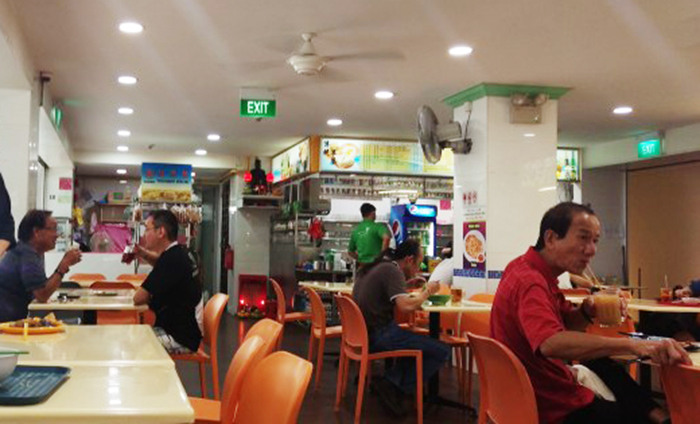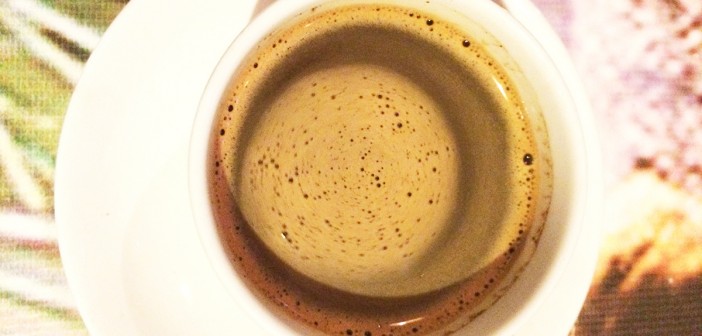In Singapore’s parlance, kopi refers to coffee.
Singaporeans love their coffee. Even way before Starbucks made an impact in the Singaporean psyche, many Singaporeans have developed a habit of starting their day with a daily dose of kopi in the mornings. To a foreigner, a trip down to the local coffeeshop in Singapore will be a confusing affair. The drink stall runners going down the tables, will shout the orders back to the drink stall operators with terms like “Kopi C!“
We had just explained kopi, but what about the “C“?

This “C” is a modifier. Just like one might order a latte with soy milk in Starbucks, Singaporeans would order, in this case, coffee with evaporated milk. There are other modifiers as well, Siew Dai, Kosong, Di Lo, Peng, Pua Sio, etc. These modifiers, are mainly in the Hokkien dialect, control the type of milk, amount of sugar, water and temperature for the coffee.
Why modify these many aspects of the coffee? Well, this is similar to Starbucks’ ordering matrics, just that it is said all at once instead of being prompted.
In Starbucks the barista would go, “What would like to order?”
“A cup of Caffé mocha, please.”
“With ice, or without?”
“Erm. Ice, please.”
“Would you like to have whipped cream?”
“No, thank you.“
In the local coffeeshop, it is all about efficiency. Unlike Starbucks, the drink stall has a low profit margin. A cup of kopi can go for S$1.20 while a caffé mocha costs S$6.10. The drinks stall uncle at the local coffeeshop cannot take as much time as the Starbucks barista to take the order and make a cup of coffee. In a single round of walking the dining area that takes a couple of minutes, a drink stall uncle would have to make five to 10 cups of kopi for the runner to serve to the customers.
So when the runner asks for the order, “What do you want to drink?”
A, “Kopi C Siew Dai Pok Peng”
B, “Kopi O Kosong”
C, “Kopi O Kosong, also.”
Runner shouts across the dining floor, “Kopi C Siew Dai Pok Peng, chit poe-á! Kopi O Kosong, jī poe-á!“
Hokkien: chit – one, jī – two, poe-á – cup.
And the drink stall uncle begins to unleash his mastery at mixing the right amount of ingredients that goes into the cup of coffee.
With so many modifiers, it is not uncommon that even some Singaporeans are as confused as foreigners, since the modifiers come from a wide variety of dialects/languages, Hokkien, Cantonese, Hakka and Malay. Here is a brief guide on the modifiers:
| Ingredients | Amount | Modifier |
| Type of Milk | condensed | evaporated | none | <NA> | C | O |
| Amount of Sugar | none | less | normal | more | Kosong | Siew Dai | <NA> | Ga Dai |
| Amount of Water | none | less | normal | more | Di Lo | Gao | <NA> | Pok |
| Temperature | hot | warm | cold | <NA> | Pua Sio | Peng |
<NA> basically means no modifier required for the corresponding amount.
Mixing these modifiers, we have at least 132 ways of ordering a cup of kopi.
So how do we know that there are at least 132 ways of ordering a cup of kopi? Well, it is based on the works from the good folks of KopiJS and a visualisation made by Swarm Studio.
KopiJS is a casual meet-up for developers and designers in Singapore. The meet-up is conducted over conspicuous cups of kopi and the topics are tech-related and coffee (of course!). Starting from end 2014, there are 15 meet-up sessions in all and an api for ordering kopi was born out of them.

A visualisation flowchart on ordering kopi. Made by Swarm Studios. Vaguely based on work done by KopiJS and kopilog.
There are other modifiers that are not covered, such as Gu You, butter. Kopi Gu You is a more exotic combination which most of young adults may not be exposed to. Hence, there are way more than 132 ways to customise your cup of kopi.
Additionally, other hot drinks can be ordered the same way. The drinks stall should ideally be serving these combinations with tea (teh) or Milo (tak giu). The hot drinks can be mixed as well, coffee/tea (yuan yang) or coffee/milo (kolo).
The next time you pay a visit to the coffeeshop, remember the different modifiers and experiment for the ultimate cup of kopi you want.






2 Comments
I think the modifiers are in Hainanese.
Hmmm. I had generalised.
The modifiers are in Hokkien, Cantonese, Hainanese and Malay. I will update the article accordingly.